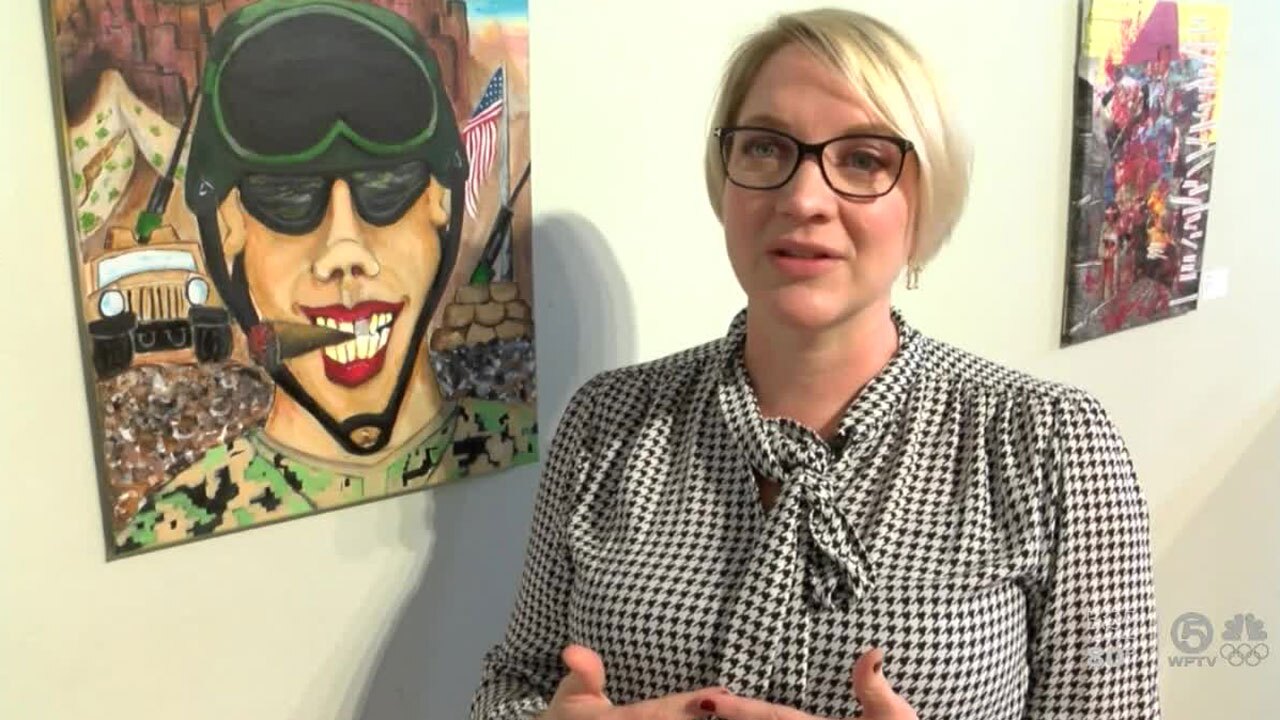WEST PALM BEACH, Fla. — The latest figures from the Department of Veterans Affairs show up to 20% of recent war veterans suffer from post-traumatic stress disorder.
For some, the nightmares, recurrent reminders, intrusive thoughts and feeling on edge are part of life.
But there are other societal factors that can increase the chances of developing it. And there's a form of therapy bringing this picture to light.
Inside his art studio is where you'll find Army veteran Rahm Levinson on most days.

"I'm taking emotion and creating something creative with it," Levinson said.
His home studio is a therapeutic space where he creates portraits of nature, stencil art and religious-inspired paintings.
"It calms me, relaxes me," Levinson said. "It's always something beautiful. Religion is a very important part of my life."
For the two-time Iraq War infantry mortarman, a focus on something greater grounds him.
"When I was deployed, it was nonstop. I fired mortars, (conducted) raids and hundreds of patrols," he said.
Levinson left the fog of war in 2007, but the fight wasn't over.
"If I come across something that reminds me of something else, I can't stay focused and on task, like I used to," Levinson said.

Levinson suffers from PTSD, just like up to 20% of his peers. But when medication and group therapy didn't help, he turned to canvas.
"I was able to go through these pictures and do something productive," he said.
And then came the social justice wave of 2020, and veterans like Levinson went from bad to worse.
"The divide — it's noticeable. It's all around us," Levinson said.
He said the images on American soil reminded him of foreign conflict.
Levinson's triggers intensified and it showed in his artwork — like the multimedia collage entitled "Indivisible."
"It's supposed to read 'The Pledge of Allegiance.' I cut it up and put it backwards because I don't feel that America as a whole is moving forward in a good way," Levinson said. "There's usually two sides, and there's that ground in the middle. Right now, we're divided, and to reach that ground, both sides have to be heard."

Levinson isn't alone.
Department of Veterans Affairs licensed mental health counselor and creative arts therapist Sara Windrem has heard from more veterans about an increase in triggers.
"This can show up as stress, anxiety, anger, aggression, depression — different things like that," Windrem said.
But there is harnessed turmoil creating masterpieces inside West Palm Beach's Armory Art Center.
"The art gives (veterans) a way to express things that they don't have words for yet," Windrem said. "And when they process that through, they own that. It's their expression. It gets it out of them and puts it onto canvas, paper or into a ceramics piece, and that's the healing part of it."

Veterans like Levinson are part of BraveHeARTS. A program within the Armory Art Center in partnership with the West Palm VA Medical Center to promote the rehabilitation of military service veterans.
"It hasn't stopped just because the fires have gone out. There's still fires burning," Levinson said.
Since 2018, over 300 veterans have taken part.
"It empowers them to sort of make sense of those events in a different way," Windrem said.
From now through Dec. 5, the public is invited to see the creativity at the armory inside the multimedia exhibition entitled "Art of the BraveHeARTS."
"We educate the creativity out of people," said Dr. Tom Pearson, Armory Art Center executive director. "You put a colored pencil in somebody's hand — eventually they're going to do something with that pencil."
Veterans are now treating each day like a masterpiece and making the public think.
"The more you look at a painting, the more it unfolds itself. One thing reveals another," Levinson said.
Click here to learn more about the BraveHeARTS program.
Click here to make a contribution visit.
The VA has launched the PTSD Coach app to help people learn about and manage the symptoms of PTSD.
To learn more about the artistic works of Rahm Levinson click here.




